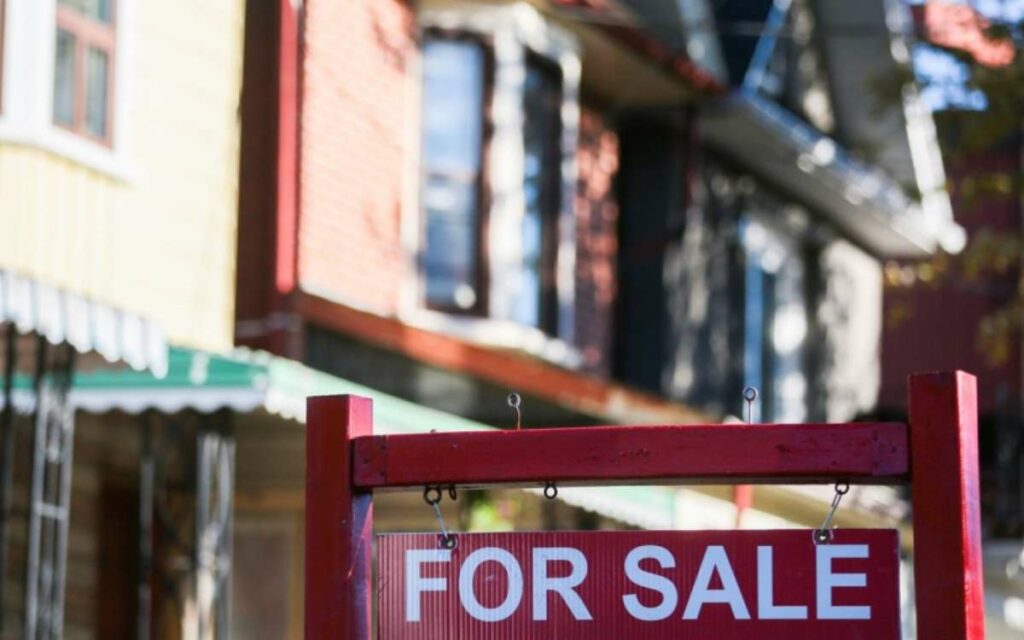
Homeowners in Niagara are feeling the pinch. Higher rates have led to more houses being put on the market, as some homeowners simply cannot afford to renew. Photo Credit: The Canadian Press/Evan Buhler.
Like much of Ontario and Canada, the Niagara region is facing a mortgage and debt crisis spurred on by over-borrowing and soaring interest rates.
The average homeowner in Niagara in the process of renewing a mortgage after purchasing a home in 2020 will see monthly mortgage payments rise by an average of $632, according to a recent report by property technology company and brokerage Zoocasa. That translates to an average increase of 32 per cent.
The spike in mortgage costs reflects trends across the country.
The explosion of mortgage costs has been triggered by increases in interest rates by the Bank of Canada. In seeking to respond to decades-high inflation Canadians experienced in 2021 and 2022, the Bank of Canada increased interest rates from 0.5 per cent in March of 2022 to 5 per cent in July of 2023. The Bank of Canada has not changed its interest rate since the summer.
The monthly payment on a variable-rate mortgage with a balance of $500,000 today is roughly $1,260 more than it was in March of 2022. Those renewing fixed-rate mortgages will have benefited from low rates locked in a couple of years ago but will face similar spikes once they must renew.
Many buyers bought and financed their homes when interest rates were at record lows and took on more debt than they could handle. Rising interest rates have exposed those who are increasingly overleveraged in household debt.
Part of the reason the Bank of Canada increased interest rates as rapidly as it did was to confront inflation levels not seen in Canada for nearly four decades. Price increases were triggered by supply chain issues and prolific government overspending and debt accumulation.
Bank of Canada Governor Tiff Macklem has said that government over-spending has worked against the Bank of Canada’s attempts to control inflation, leading to even higher interest rates.
“More focus by governments on the inflationary consequences of their spending decisions would be helpful,” said Macklem last year.
Homeowners in Niagara are feeling the pinch. Higher rates have led to more houses being put on the market, as some homeowners simply cannot afford to renew.
There are now 10 times as many homes in the Niagara region on the market today than there were just two short years ago. However, home prices are falling and many feeling the need to sell their homes are unable to generate offers that line up with what they paid for their homes, particularly when the market when hot during and right after the pandemic.
The average sale price of a home in the Niagara area was nearly 12 per cent lower last year than in 2022. That’s a decrease in value for the average Niagara home of $97,000 in a matter of just 12 months.
Experts expect the Canadian economy to slow down in 2024, which could lead the Bank of Canada to cut interest rates. That would help ease mortgage rates, but rates aren’t expected to return to the historically low rates of 2020 and 2021, when many current homeowners purchased their homes and locked into decades-low fixed-rate mortgages.
Those on the rental market are feeling the pinch as well.
Last month, the average rental rate for a one-bedroom apartment in St. Catharines was $1,662. Two years ago, it was $1,193. That’s an increase in rental costs of 39 per cent.
Those numbers suggest that both renters and homeowners in the Niagara region are feeling the brunt of massive increases in the cost of housing. Other living costs, such as the price of food and gasoline, have spiked in recent months and years as well, putting many families on the brink.
Soaring interest rates have impacted the cost of borrowing funds on lines of credit and credit cards as well. Along with massive mortgages, this has helped lead Canadians to take on a record level of household debt, which experts say is increasingly unsustainable.

Jay Goldberg is the Ontario Director at the Canadian Taxpayers Federation. He previously served as a policy fellow at the Munk School of Public Policy and Global Affairs. Jay holds a Ph.D. in Political Science from the University of Toronto.








